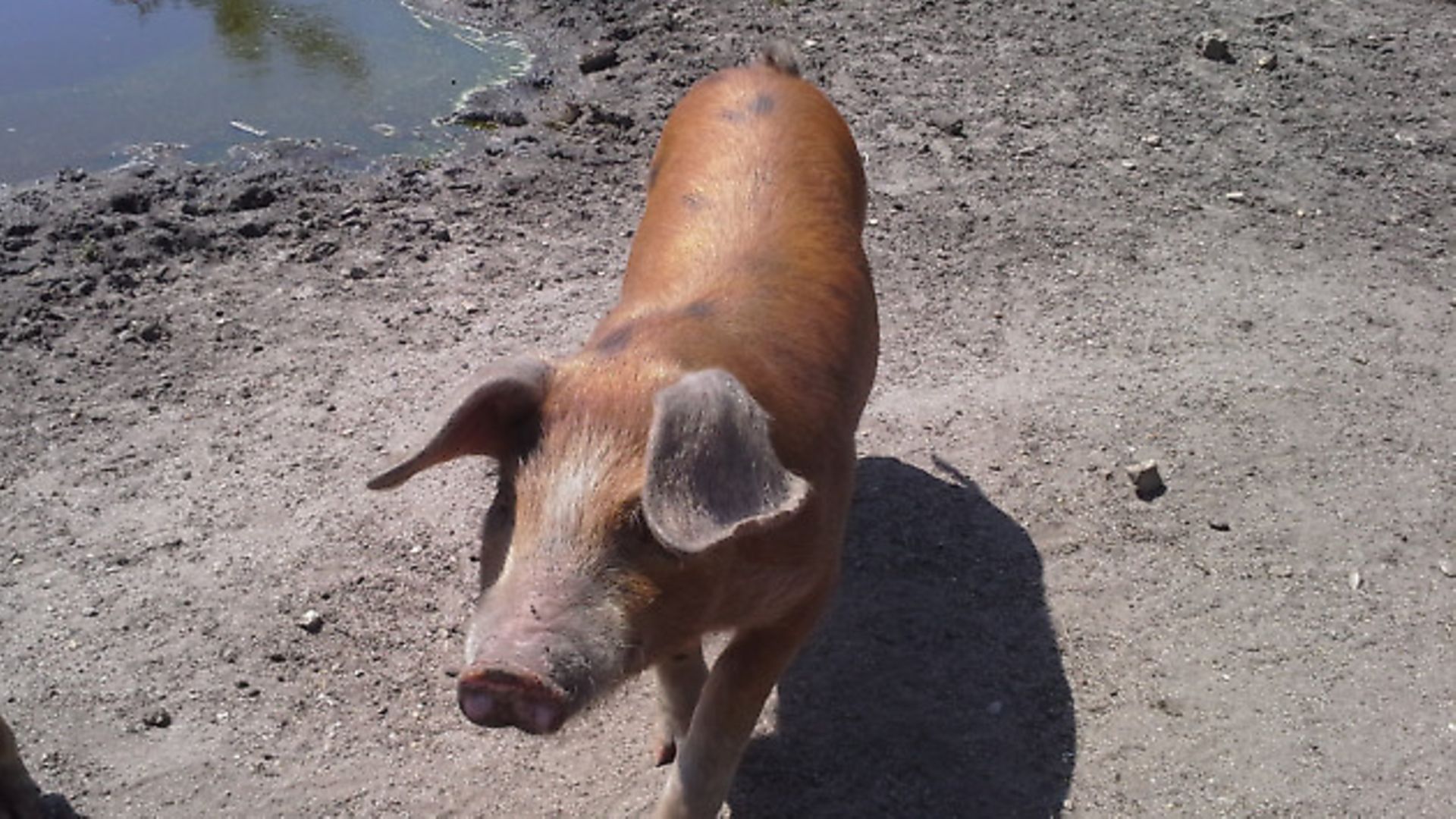Umbilical hernias in pigs are a common affliction, as vet Pete Siviter explains

If you are a breeder of pigs, or if you buy a batch of weaners every year to grow on, you may notice that a few of these growers develop umbilical hernias. This is a common affliction of the growing pig (with approximately 1% of pigs affected), and generally presents as a grapefruit-sized bulge under the skin of the navel, as pictured. This is not in itself life-threatening, but the danger comes if the protuberance begins to grow: if it becomes pendulous or reaches the ground then the pig may be in serious trouble due to the risk of trauma or damage by other pigs, or even strangulation of the intestines within the sac. In these cases the only options may be surgical correction or euthanasia. When you identify a small hernia, monitor it closely and be prepared to seek veterinary advice if it grows or becomes damaged. If the hernia has remained small and unchanged by the time the pig is finished then it is perfectly reasonable to send him on to slaughter, although it is polite to speak to the abattoir in advance to let them know they have a hernia to watch out for.
Top Tip – navel health in newborn animals
Another common problem we encounter across all species is ‘navel ill’ (infection of the navel), which occurs in very young animals. The best way to prevent this is to ensure that the birthing environment is hygienically prepared and that the calf, piglet, lamb or kid has his navel dipped with tincture of iodine as soon as possible after birth. This has an antiseptic effect and also dries out the remainder of the umbilical cord so that it doesn’t fester. (An infected navel will appear hot, hard and swollen. If this happens you must speak to your vet and treat the animal as soon as possible!)
Always finish the course!
It’s difficult to pick up a newspaper this year without finding an article somewhere inside on antimicrobial resistance, or ‘AMR’. This has been hailed as the next deadly threat to modern healthcare, and some of the blame has been attributed to the use of antibiotics in livestock. However, as we know, there are many bacterial diseases of animals which need antibiotic therapy in order to be resolved, so what can we do? The answer is to use them sparingly and responsibly:
• If your vet prescribes a course of antibiotics, always finish the course. It is well documented that a short burst of antibiotics will increase the speed with which bacteria develop resistance, even if the animal seems to have improved ahead of schedule.
• Never store up ‘spare’ antibiotics for a rainy day.
• Always read the label or prescription – incorrect administration leads to resistance.
• Only use medicines that are in date and have been stored correctly.
• If in doubt, always consult a veterinary surgeon.
Image(s) provided by:
Archant







